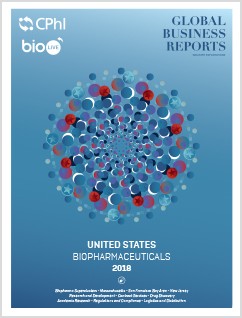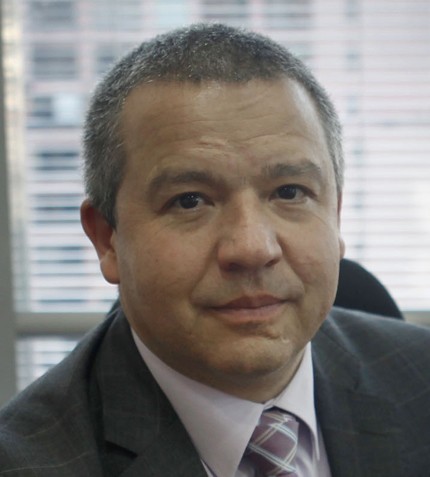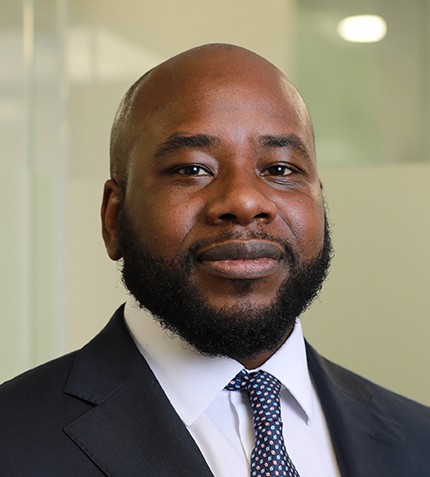
"The source of the cancer in terms of the organ does not really matter; what really matters is what is making it grow. Now that we can better understand the science we can move towards more personalized treatments, which really interests investors."
RELATED PUBLICATION
ARTICLES FROM THIS PUBLICATION
- The Winning Formula: Building the Number One Biopharmaceutical Supercluster
- Finding Funding: The Diversification of the Biotech Financing Landscape
- Infectious Diseases: Addressing Growing Resistance
- Patient Selection: The Right Drug for the Right Patient
- From Volume to Value: A Shift in Innovation Focus in the U.S.
Richard Peters
PRESIDENT AND CEO, MERRIMACK PHARMACEUTICALS
Following the sale of its approved product, Onivyde, to Ipsen, how has Merrimack refocused its clinical pipeline?
Merrimack has a track record of successfully developing and commercializing a drug, setting it apart from your typical biotech company. We sold the drug to Ipsen and focused more on the R&D engine, taking the opportunity to target biomarker-defined cancers. We want to develop drugs for patients with a very specific biomarker signature because this defines a more homogeneous patient population, resulting in a potentially much higher treatment effect. Payers do not want to pay for patients who do not respond – their biggest worry is that they are paying for a patient who will not benefit from a certain drug. We are very much focused on this strategy, which will also present advantages once we arrive at the commercial phase. We are able to conduct smaller studies because our patient population is more homogeneous and we can generate data faster. On the regulatory front, this may allow us to have more streamlined communications with regulators. Regulators are very interested in well-defined patient populations.
We are very fortunate as a small biotech company in that we have 10 wholly-owned programs. They are completely unencumbered, which means that as the data mature, we have all kinds of options. Some, we might decide to keep and fully develop; for others, we might decide to pursue partnerships.
Could you elaborate on the progress of Merrimack’s development pipeline?
We have four programs in the clinical pipeline. Three of these are Phase 2 randomized clinical studies, which is incredibly important. We are implementing randomized patient enrolment for our Phase 2 trials, exposing patients to our drug but at the same time comparing them with patients on an active control. Many companies are carrying out Phase 2 trials without an active comparator, but the challenge with those is never quite knowing if the drug is working or if the patient selection is biased. The data we are generating are therefore of a very high quality.
Of these four clinical studies, we anticipate data readouts for three in 2018. In two of them, which are randomized Phase 2 studies, we are targeting growth factor pathways, trying to track what makes the cancer grow and then block the signalling pathways that enable the cancer cells to grow. In another study, which is in Phase 1, we are targeting cellular proliferation and repair, trying to block the division and repair of cells. We also have six preclinical programs, two of which target the immune system.
The first data readout that we expect in the first half of 2018 involves a pancreatic cancer indication. We are only targeting metastatic cancers. Pancreatic cancer patients usually do not live more than one year when the disease is metastatic. We are comparing the patients’ current chemotherapy treatment to treatment in combination with our drug, MM-141. In the second half of this year, we are expecting the readout of MM-121, which is an antibody that blocks a growth pathway in lung cancer. These will be very important because they will indicate whether adding our drugs for either the treatment of lung or pancreatic cancer is likely to provide meaningful clinical benefit.
As the market becomes more crowded, how has the investment climate for oncology changed over the years?
Oncology remains a very attractive investment climate for investors – both venture capitalists and public investors. While the market is certainly crowded, 40% of drugs in development are oncology drugs, so cancer is really still an area into which pharma and biotech are putting a lot of resources. As we develop a greater understanding of the science behind cancer, acceptance increases that not all cancers are the same. While the primary concern previously centered around the anatomical definition of cancer and this remains important, understanding the molecular signature of the cancer has also increased in importance. The source of the cancer in terms of the organ does not really matter; what really matters is what is making it grow. Now that we can better understand the science we can move towards more personalized treatments, which really interests investors.
In what ways has the approval process changed as treatments become more targeted?
In the past, the FDA measured the success of many trials based on the endpoint of overall survival, so we had to look at the absolute life or death situation of the patient. The FDA has since realized that with these personalized approaches, looking at overall survival may not be possible. As the patient progresses, they could be exposed to something else, and it is uncertain whether it was the drug or this other influence that impacted survival. The FDA is now much more receptive to taking other types of endpoints, which could be the progression level, response rates or even biomarker responses. This is helpful because it speeds up the development process.
What are the key objectives towards the end of 2018 and beyond?
2018 is really going to be all about the data, with three readouts expected for our clinical programs this year. We work in a data-driven business, so the need to focus on generating data is clear. Because we have 10 programs, we effectively have 10 shots on goal, which de-risks us somewhat.
We also will continue to reach out to potential partners, as it is very rare to develop a new drug completely alone. Merrimack will remain focused on developing drugs with meaningful clinical benefits. Our vision is that all cancer patients and their families will live fulfilling lives.











